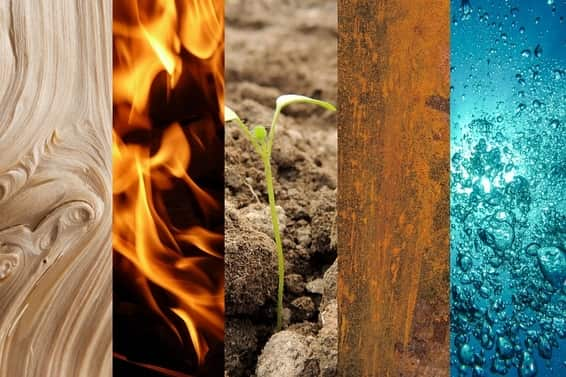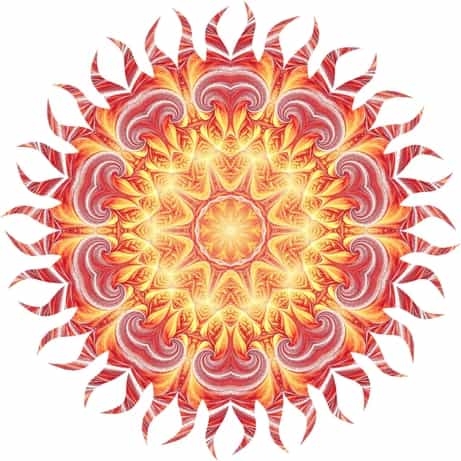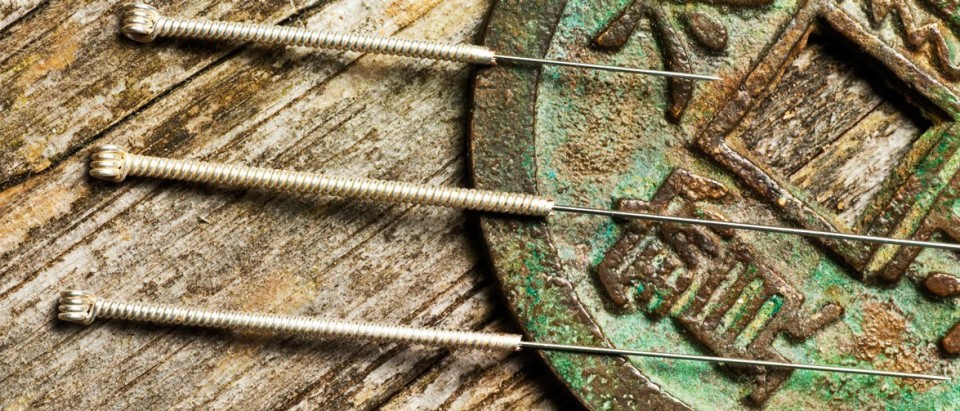Acupuncture in Jerusalem – The Chen VaChesed Clinic
FIVE ELEMENT ACUPUNCTURE
What is 5 Element Acupuncture? How does it compare to other types of acupuncture? Where can I find acupuncture in Jerusalem? We’ll be answering these questions and much more in this article. You’ve probably heard of Acupuncture and may have viewed it as some sort of Chinese relaxation technique. However you’d be surprised to learn how many ailments acupuncture can help with and that it has evolved into one of the most utilized forms of complementary integrative medicine interventions in the United States.What is Five Element Acupuncture?
Five Element Acupuncture is a 3000-year-old system of medicine, whose goal is to uncover and treat the root cause of disease, restore a human being to his fullest function and enable him to reach his highest potential.Where can I find Acupuncture in Jerusalem?
Yaakov Wieder is the one of the most prominent Acupuncturists in Jerusalem. You can visit his clinic in Ramat Eshkol OR receive a free telephone consultation. You can check out what people have said about his treatments here.How did 5 Element Acupuncture originate?
The ancient Chinese were astute observers of the natural world. Their system of medicine grew out of their scientific, philosophical and religious understanding of the relationship between man and the rest of the cosmos. They saw creation as a constant flux of interchanging energies and infinite complexity underlined by a fundamental unity. Within this vast complexity they classified five distinct patterns of energy which are known as the Five Elements. These are wood, fire, earth, metal and water. However, unlike the classical Western notion of the four elements – fire, earth, air and water – which were seen as the fundamental building blocks of the universe.The Elements in early Philosophy
The notion of the four elements had a strong influence on earlier practitioners of western medicine, including Hippocrates, Galen, Maimonides, Paracelsus, and Samuel Hahnemann). Chinese philosophies saw the elements as having a non-static and fluid nature (in fact, some authors have used the term five phases as a more accurate translation of the classical Chinese texts). This reflects a system of medicine that focuses more on function rather than structure. It has mapped channels of energy in the body and how they flow and it attributes all pain and dysfunction to blockages and imbalances in these flows of energy. It also attributes mental, emotional and spiritual as well as physical functions to each of the internal organs. One of the best ways to get a better understanding (a flavor) of the Five Elements as is understood by Chinese medicine is to consider the seasons of the year. Wood corresponds to spring, Fire to summer, Earth to late summer, Metal to fall and Water corresponds to winter.
Healthy Manifestation of the 5 Elements
Ideally, each element is expressed freely in each person and at the appropriate time. i.e. grief at a funeral, joy at a wedding, sympathy while caring for the sick, fear in times of danger, and anger when being unduly restricted. An element is considered out of balance when it shows up in an exaggerated form or inappropriate time. The lack of expression of that element can also be seen as a sign of imbalance and an astute practitioner of five element acupuncture makes note of even the most subtle changes of sound, color, odor and emotion that take place during a patients initial interview and throughout the course of treatment. Since all of the elements interact with each other and weakness or disturbance in one organ can create stress in another, symptoms alone cannot be relied on to discover the true source of the distress. That source lies in the primary element that has been out of balance either constitutionally or as a result of early trauma. The goal of Five Element Acupuncture is to correctly diagnose and treat the element that is most out of balance. The success of treatment can be largely based on how well this is done.Yaakov, that’s really interesting, please tell me more about the 5 elements!
Wood Energy
The energy of wood is like the spring. It is creative, direct, quickly moving, upwards and irrepressible. I remember the bulbs in my garden in America how each spring they would burst forth through the asphalt of my driveway in a new location each year. Spring is the time of renewal; the perfect time for starting new projects with purpose and clarity.Fire Energy
The energy of fire is like that of the summer. Warm, expansive, romantic, flowers in full bloom, trees at their deepest green. The air is abuzz with the sound of insects, all of life is at its most active stage. In the fire energy of summer, people are at their most extroverted states. Long summer vacation days and warm romantic evenings. The feeling of wanting to go out and do more.
Earth Energy
Earth, is the energy of late summer (at least in China and other temperate climates) is seen as the turning point of the year. There is a stillness in the air, often lots of humidity. The fruits are ripe, the harvest is ready to bring in, and all creatures of the earth are nurtured by its bounty.Metal Energy
The energy of metal is like the fall. That of letting go, of releasing. The ability to discard that which is no longer needed. Summer clothes are put away, fields are plowed under, and trees shed their leaves. However, all that is of value and what is essential still remains to be held in reserve.Metal in its imbalanced state:
Metal either throws everything out, or holds on to everything.Water Energy
The energy of water is expressed by the winter. An energy of contraction, pulling in and less activity. The fields are empty and the trees are bare and animals in hibernation. Days are shorter and the long dark nights are settling in and gathering and strengthening our reserves. Just as the frozen ground conceals the many seeds underneath, so does the silence and cold stillness of winter conceal a tremendous seed of potential within us, to be awakened in the spring.The flow of seasonal energy
Just as the seasons flow from one into the other in nature, so the elements when in balance, flow smoothly in a human being*. (One could say that the increasing occurrences of unseasonable weather is a sign that the earth is becoming more out of balance.) According to Chinese medicine the synchronization and equilibrium of the continual flow of all five elements is the essence of health and well-being as well the prevention and cure of disease.How is the flow and balance of the five elements gauged?
In addition to the energy of the seasons, as we described above. Each element has attributed to it a pair of internal organs and a pair of acupuncture meridians which correspond to those organs. The health of each organ and the proper flow of energy in each meridian can be an indicator to which element is out of balance. However, the particular emotion, sound quality of the voice, facial color, and odor is usually the deciding factor. (Facial color is usually a subtle tone that is found around the outsides of the eyes or the corners of the mouth.)
How does 5 Element Acupuncture compare to other types of acupuncture?
Firstly, I’ll mention what they most have in common. There is general agreement and understanding of the location and flow of energy through the meridians and how to affect them through the use of needles and other techniques. There is also consensus regarding the location of the main acupuncture points and the functions of the internal organs. There is also a shared acknowledgement that lifestyle, diet and stress play in the etiology of disease and in its successful treatment. However what today is called Traditional Chinese Medicine is only a recent development which has been used and taught in China since the end of World War Two. It is based primarily on what is known as the eight principles. In this system, physical symptoms and sensations as well as objective observations are categorized according to hot/cold, interior/exterior, deficient/excess, yin/yang. Pulse readings (in Chinese medicine there are six pulses on each wrist corresponding to the twelve organs) and the appearance and coating of the tongue are often used to confirm a diagnosis. The goal of treatment is usually to expel a pathogenic factor (i.e. wind, heat, cold, damp) and to tonify a deficient organ. Treatment usually consists of a large number of needles, left in for at least 20 minutes (often longer) and a prescription for Chinese herbs. Little attention is given to emotional issues except for clear evidence of mental illness. Having developed in the context of the communist materialist worldview, no acknowledgement is given to the spiritual side of man. I will briefly mention that Japanese acupuncture focused primarily on the flow of energy in the meridians, rather than the organs themselves or any particular categorization of pathologies. Ear and scalp and hand acupuncture are recent developments that seem to have no relation to the flow of energy through the meridians or the traditional scheme of points. Like Reflexology they seem to be based on the idea that the body is a hologram and the whole can be accessed through the separate parts. But these approaches also seem to be primarily based on physical complaints and symptomatic relief. Treating the source, not the symptom Five element acupuncture as mentioned above seeks to treat the source of the person’s stress, rather than the symptoms themselves. This is achieved through the correct perception and evaluation on what is the constitutional or primary elemental imbalance.
Needle Work
Treatment is focused primarily on those organs and meridians related to that element. Relatively few very thin needles are used. They are inserted quickly and often removed immediately. Moxa (a dried herb) can be burnt on an acupuncture point to tone and strengthen that function. Where to put the needles and why In choosing which specific points to use when giving treatment, practitioners often will place great emphasis on the various psycho-spiritual issues that the patient is currently struggling with in his or her life. The element that is constitutionally out of balance becomes like tinted glasses through which a person interprets and experiences all the events of their life. One example is how a metal energy CF (constitutional factor) will most often perceive life’s challenges and everyday difficulty through the lens of disappointment and lack of self-worth. Part of the practitioner’s role is to help guide their discovery of these patterns and use the needles to reinforce the patient’s own intention for growth and change. As practiced today, most Five Element acupuncturists also incorporate some techniques from other traditions that are helpful for removing specific energetic blocks that might otherwise get in the way of a successful treatment. The Wise Five Element Practitioner Simplicity and clarity are important qualities that a Five Element acupuncturist seeks to bring to the treatment. Prof. J. R. Worsley was the foremost proponent of Five Elements Acupuncture of this century in the Western world. He used to say, “the ideal treatment is one needle and after forty years I myself have gotten it down to two”. The subtle signs of energetic imbalance may precede the appearance of any physical symptoms by a year or two. In order for a doctor of Chinese medicine to be considered worthy of his profession, his first and highest calling was to prevent disease. In ancient China, once balance was achieved, patients would come for treatments 4-5 times a year to stay in balance with the changing seasons. The doctor was paid only if the patient did not get sick. The theoretical and practical foundation of practical Chinese medicine in much of it’s early history was primarily Five Element Acupuncture.In ancient China, one treatment at the change of season was usually enough to maintain balance.How long does 5 element acupuncture treatment take? Unlike ancient China where one treatment was often enough to maintain health and well-being, today life is much more complicated. Our constitutions are weaker. The stresses of life are much more complex. Instead of just the vulnerability to the outside elements that was common in an agrarian society, most people today are constantly being bombarded by many varieties of stress. There’s often stress in the workplace, dysfunctional families, unhappy marriages and complex financial and societal pressures stress that most people have to deal with every day. Our lifestyles are very disconnected from nature. We eat processed food, spend much of our time in artificial light and air, most of us stay up too late, get poor quality sleep and not enough exercise. Many people’s relationship to sexuality and gender is out of balance. Our daily schedules are so packed that rarely do we stop long enough to take a deep breath. When we do, the air is likely to be polluted, as well as the water, soil and the whole food chain. Overuse of prescription and recreational drugs are endemic. Electromagnetic pollution is a new and often under-acknowledged factor in the etiology of disease. All of these challenges are mostly new to the practitioner of Chinese medicine. The results of 5 element acupuncture treatment can often be felt within a few days and sometimes immediately. Different levels of imbalance combined with different degrees of life challenges can require longer periods of treatment. Therefore, most people will need more consistent care than was the norm in ancient China. Lifestyle changes are helpful but nothing should be forced, rather with continued treatment it becomes easier to be in tune with and act in accordance with what is healthy and life-supporting.